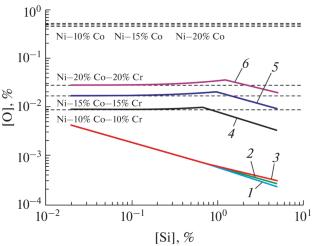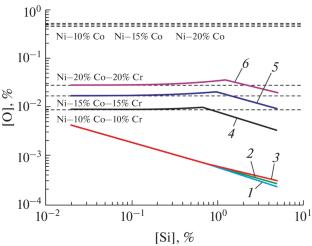硅对镍钴铬熔体氧溶解度的影响
IF 0.3
Q4 METALLURGY & METALLURGICAL ENGINEERING
引用次数: 0
摘要
摘要/ abstract摘要:对1873 K时硅对Ni-Co-Cr熔体氧溶解度的影响进行了热力学分析。Ni-Co-Cr熔体中少量的硅对氧浓度的影响较弱,氧浓度由铬含量决定。硅含量越高,铬、硅与氧的相互作用机制发生改变后,氧浓度降低,硅决定熔体中氧的溶解度。然而,当硅含量高时,Ni-Co - cr熔体中硅的氧化能力明显低于Ni-Co熔体。本文章由计算机程序翻译,如有差异,请以英文原文为准。


Effect of Silicon on the Oxygen Solubility in Ni–Co–Cr Melts
Abstract—A thermodynamic analysis of the effect of silicon on the oxygen solubility in Ni–Co–Cr melts at 1873 K is performed. Small amounts of silicon present in the Ni–Co–Cr melts weakly affect the oxygen concentration, which is determined by the chromium content. The oxygen concentration decreases at a higher silicon content, after changing the interaction mechanism of chromium and silicon with oxygen when silicon determines the oxygen solubility in the melt. However, at high silicon contents, the oxidation ability of silicon in the Ni–Co–Cr melts is substantially lower than that in the Ni–Co melts.
求助全文
通过发布文献求助,成功后即可免费获取论文全文。
去求助
来源期刊

Russian Metallurgy (Metally)
METALLURGY & METALLURGICAL ENGINEERING-
CiteScore
0.70
自引率
25.00%
发文量
140
期刊介绍:
Russian Metallurgy (Metally) publishes results of original experimental and theoretical research in the form of reviews and regular articles devoted to topical problems of metallurgy, physical metallurgy, and treatment of ferrous, nonferrous, rare, and other metals and alloys, intermetallic compounds, and metallic composite materials. The journal focuses on physicochemical properties of metallurgical materials (ores, slags, matters, and melts of metals and alloys); physicochemical processes (thermodynamics and kinetics of pyrometallurgical, hydrometallurgical, electrochemical, and other processes); theoretical metallurgy; metal forming; thermoplastic and thermochemical treatment; computation and experimental determination of phase diagrams and thermokinetic diagrams; mechanisms and kinetics of phase transitions in metallic materials; relations between the chemical composition, phase and structural states of materials and their physicochemical and service properties; interaction between metallic materials and external media; and effects of radiation on these materials.
 求助内容:
求助内容: 应助结果提醒方式:
应助结果提醒方式:


